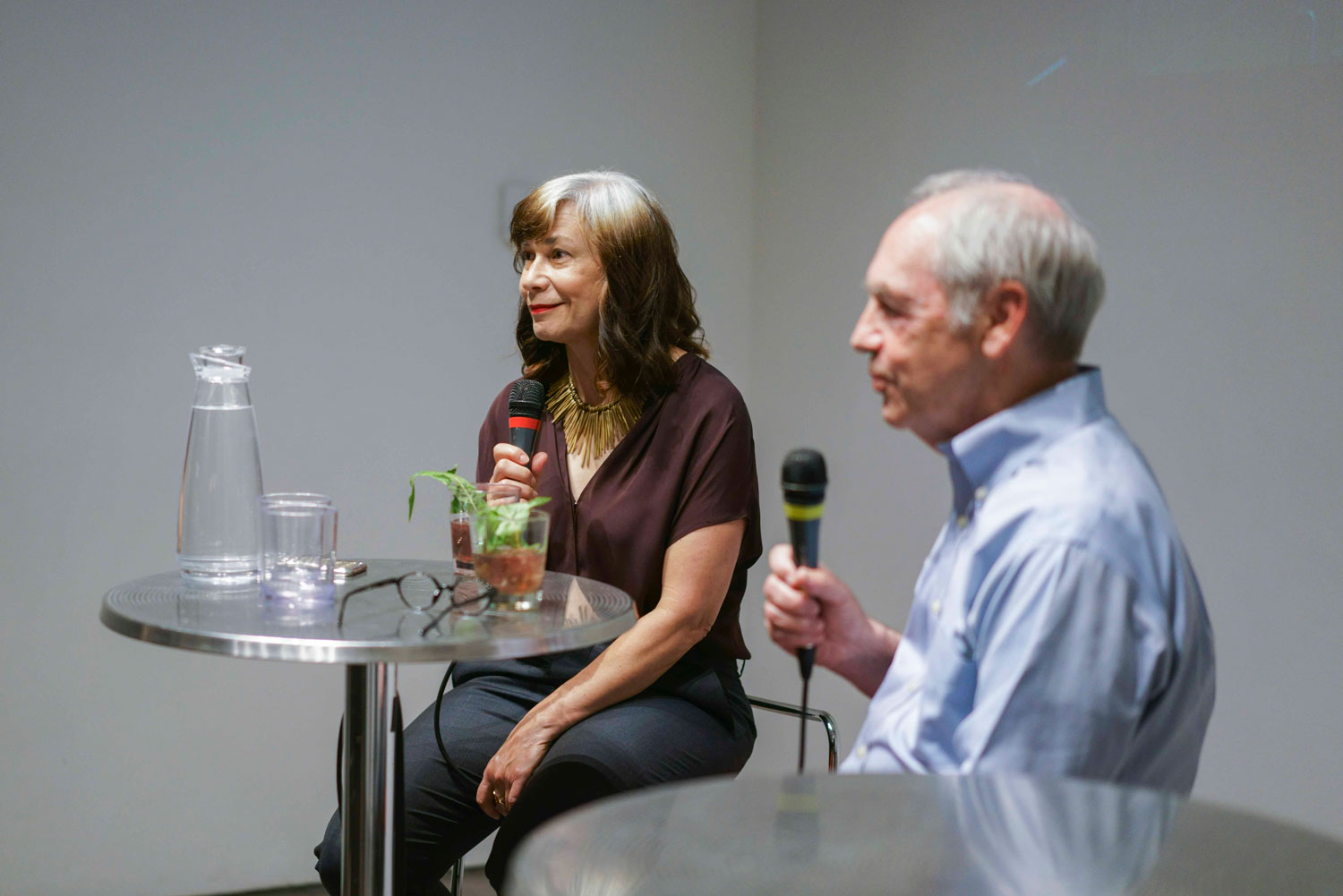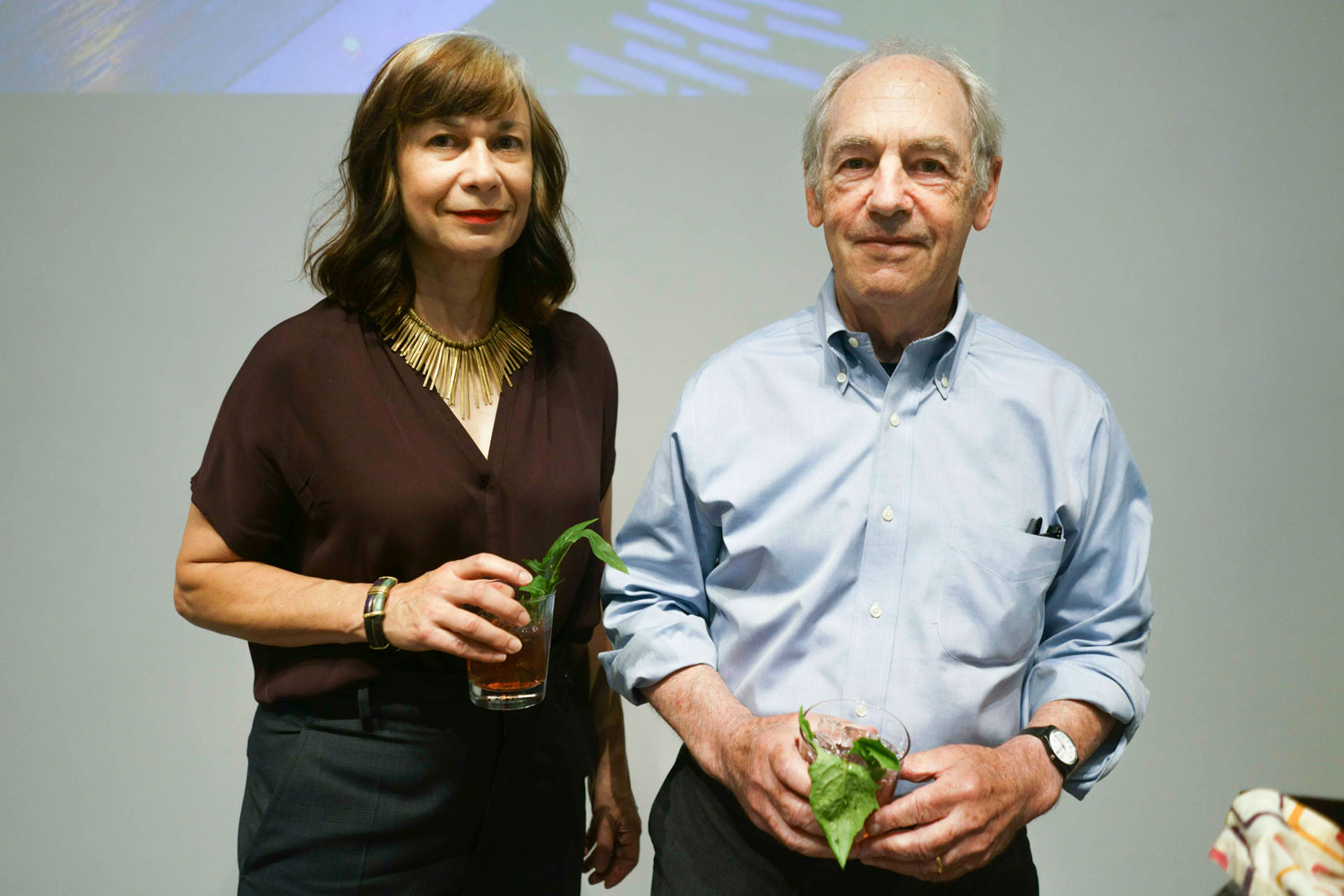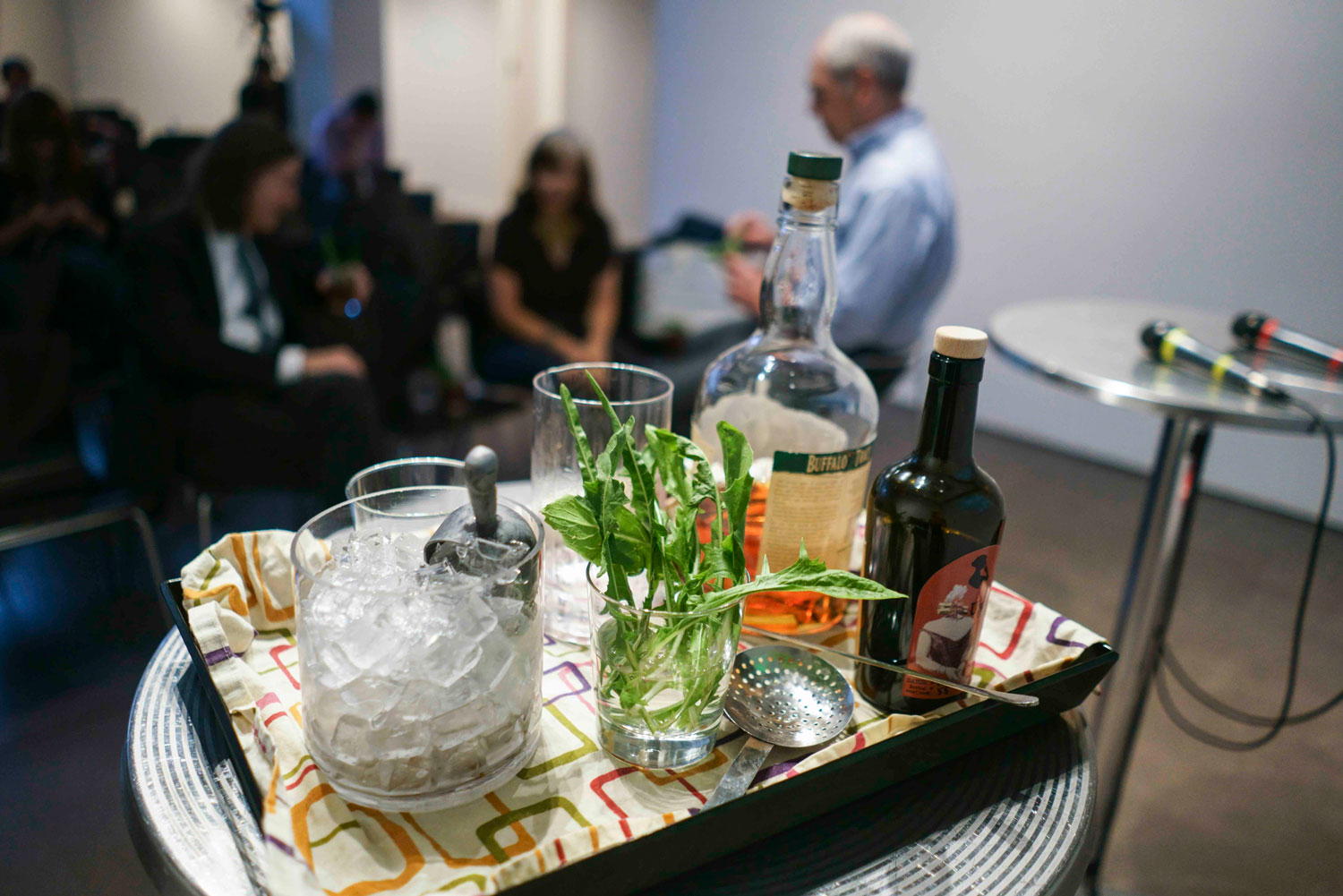by: Anna Gibertini
On 09.08.17, the AIANY Architecture Dialogue Committee hosted another evening of incisive architectural discussion and criticism as part of its continuing “Cocktails and Conversation” series. The guests speakers, Peter Gluck of GLUCK+, listed in 2014 as one of Fast Company’s “World’s Top 10 Most Innovative Companies in Architecture,” and Inga Saffron, the renowned architectural critic for the Philadelphia Inquirer, held nothing back in their appraisal of the state of architecture today. AIANY Architecture Dialogue Committee co-chair Will Singer pointed out that “Cocktails and Conversation” has been a fixture of the Center for Architecture’s programming for five years, and this installment may have offered the most scathing commentary of the profession to date.
Both Gluck and Saffron agreed that today’s architecture is subpar, calling it “awful” and “a shame.” But when pressed to elaborate, they cited methodological reasons for architecture’s decline, not aesthetic ones. Saffron critiqued the invasion of foreign and big finance into architecture, saying that the model of big money encouraged the construction of buildings that looked like “they will not be standing 30 years from now.” She also attributed the decline of skill and craft in the field to big finance. An improvement she did note, however, was the increasingly efficient urbanization that cities have developed over the last 30 years.
Gluck agreed, and then went even further. Architects, he said, have lost touch with their own profession.
“They’ve given up responsibility in the construction process,” Gluck stated. “The contractors tear apart architectural drawings, and then the shit-fest starts. The buildings will look great in construction, but when they go up they look terrible. Architects also increasingly live in silos of specialized knowledge, unable to understand or communicate with contractors and developers effectively.”
These were certainly some harsh words, but Gluck doesn’t just talk the talk—his firm practices Architect Led Design Build for the majority of their buildings. For 40 years, GLUCK+ has had a hand in the construction process of their work, bringing what they’ve produced on paper to the real world exactly as they envision it. Gluck showcased this approach in a handful of projects, including The Stack, a modular affordable housing unit located in Upper Manhattan; the Cary Leeds Center for Tennis and Learning, which was Gluck’s first major implementation of ALDB on a public project; and The Bridge, a Philadelphia’s high-rise seeking LEED Gold that successfully navigates the needs of a city with a fetishized historic aesthetic that simultaneously needs to accommodate a burgeoning population of young people who want modernity.
“We purposely seek out projects that are not high profile,” Gluck explained. “We like to work on projects that have ordinary budgets, and we like working with non-profits. As architects we have a means and therefore a responsibility to help these organizations, and how could you not want to help them? Did we make back all of the money from the Leeds center? Probably not, but who cares?”
Gluck and Saffron also discussed varying ways Philadelphia and New York differ in their approaches to development.
“Philadelphia is like Rome,” Saffron said. “If you dig, you will find something. New York City, on the other hand, has a brand of constant re-emergence, a kind of un-sentimentality to its built environment.”
The cocktail portion of the evening was a West Harlem-take on the Manhattan, so named because GLUCK+ is located in West Harlem. The ingredients included: Buffalo Trace Bourbon; Uncouth Vermouth’s butternut squash vermouth with dandelion greens, oregano, and tarragon added; and some dandelion greens added for garnish.
Event: ”Cocktails & Conversation: Peter Gluck and Inga Saffron”
Location: Center for Architecture, 09.08.17
Speakers: Peter Gluck, Founder and Principal, GLUCK+
Inga Saffron, Architecture Critic, Philladelphia Inquirer
Organized by: AIANY Architecture Dialogue Committee












